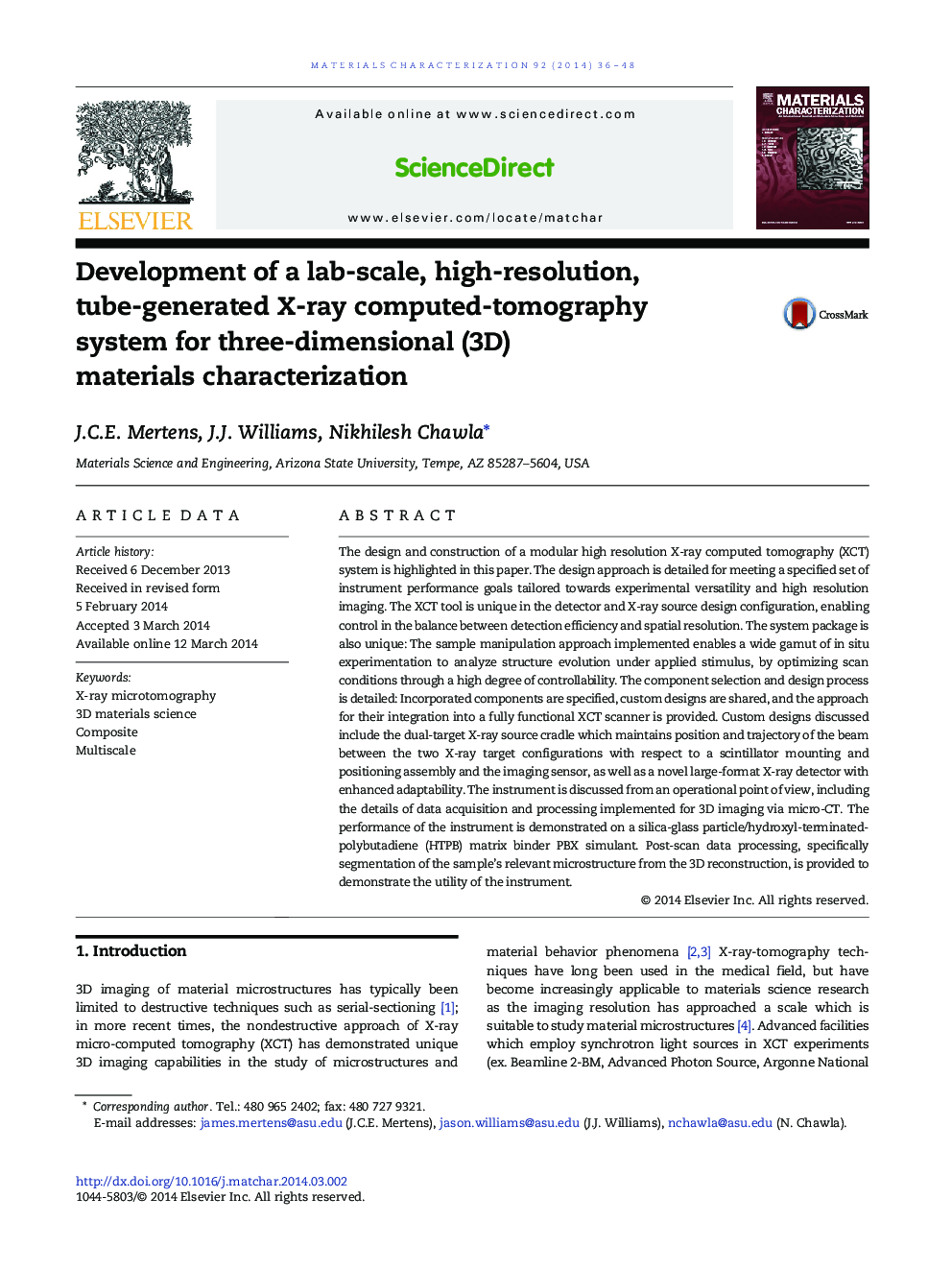| Article ID | Journal | Published Year | Pages | File Type |
|---|---|---|---|---|
| 1571079 | Materials Characterization | 2014 | 13 Pages |
Abstract
The design and construction of a modular high resolution X-ray computed tomography (XCT) system is highlighted in this paper. The design approach is detailed for meeting a specified set of instrument performance goals tailored towards experimental versatility and high resolution imaging. The XCT tool is unique in the detector and X-ray source design configuration, enabling control in the balance between detection efficiency and spatial resolution. The system package is also unique: The sample manipulation approach implemented enables a wide gamut of in situ experimentation to analyze structure evolution under applied stimulus, by optimizing scan conditions through a high degree of controllability. The component selection and design process is detailed: Incorporated components are specified, custom designs are shared, and the approach for their integration into a fully functional XCT scanner is provided. Custom designs discussed include the dual-target X-ray source cradle which maintains position and trajectory of the beam between the two X-ray target configurations with respect to a scintillator mounting and positioning assembly and the imaging sensor, as well as a novel large-format X-ray detector with enhanced adaptability. The instrument is discussed from an operational point of view, including the details of data acquisition and processing implemented for 3D imaging via micro-CT. The performance of the instrument is demonstrated on a silica-glass particle/hydroxyl-terminated-polybutadiene (HTPB) matrix binder PBX simulant. Post-scan data processing, specifically segmentation of the sample's relevant microstructure from the 3D reconstruction, is provided to demonstrate the utility of the instrument.
Related Topics
Physical Sciences and Engineering
Materials Science
Materials Science (General)
Authors
J.C.E. Mertens, J.J. Williams, Nikhilesh Chawla,
